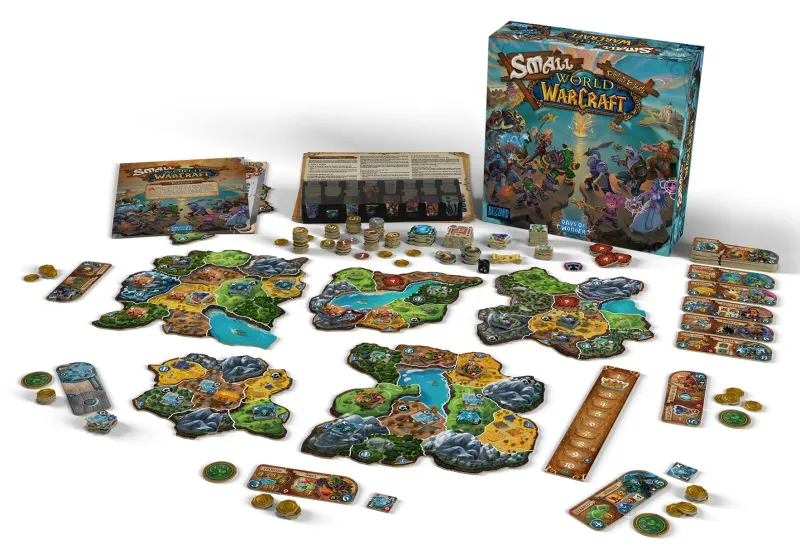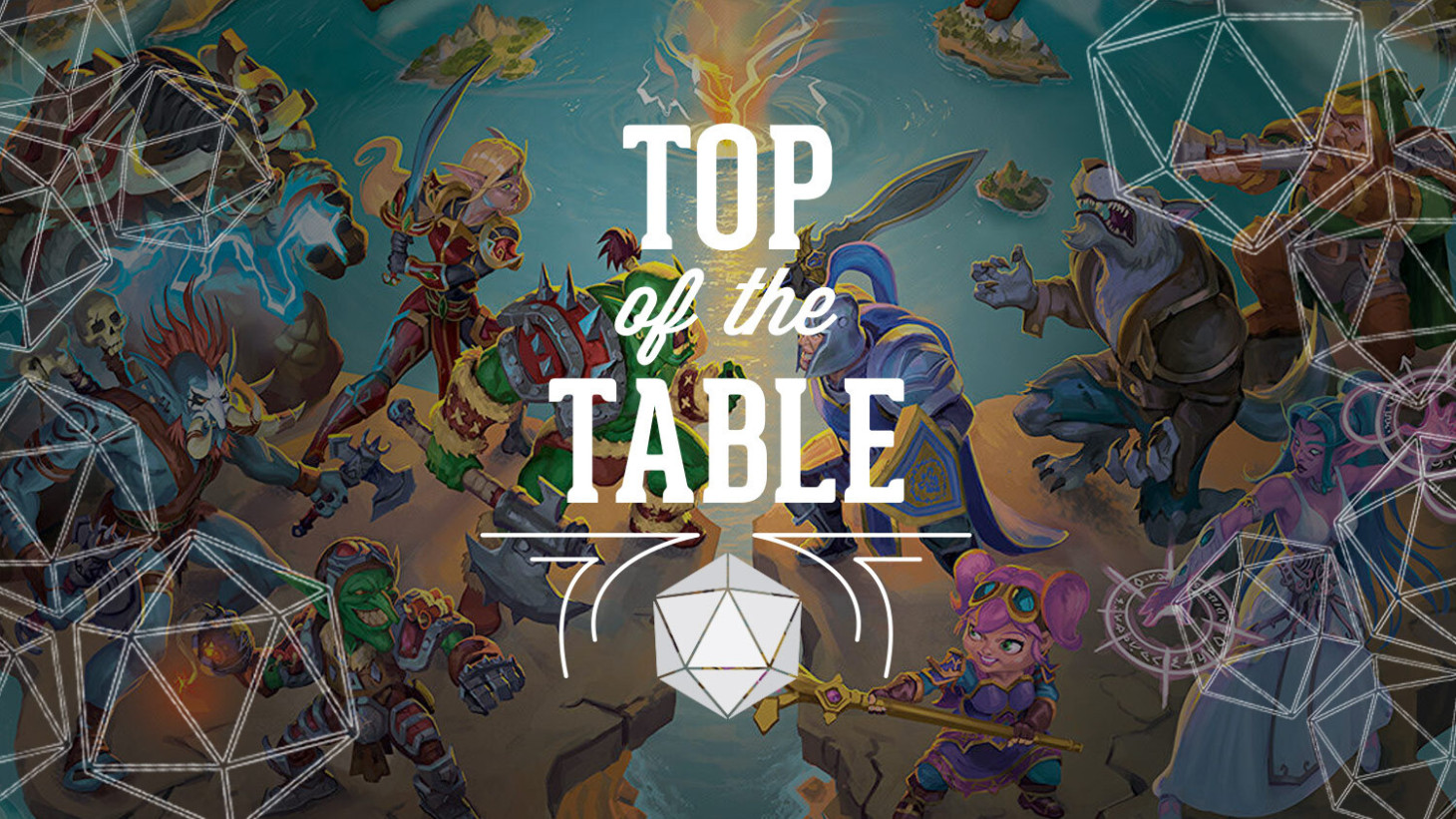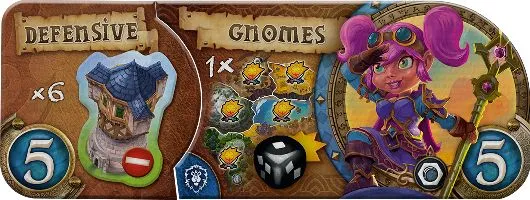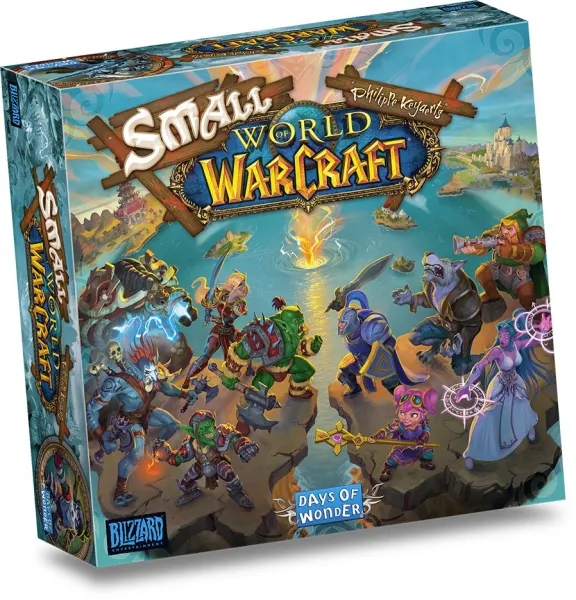

Please support Game Informer. Print magazine subscriptions are less than $2 per issue

I suspect that Small World of Warcraft began its life with someone giggling about the way the two franchise names combined in an amusing way. But after that initial laugh, it must not have taken very long to realize that the popular Small World board game concept was an excellent match for the celebrated Blizzard video game. The resulting marriage has led to a tabletop game that should readily engage fans of the Warcraft universe, whether you’ve ever played the original Small World or not. Accessible rules and some gorgeous art on Small World of Warcraft’s plentiful components make this an easy choice for game night for you and your friends, especially if you're waiting impatiently for a certain expansion to arrive.
Like the original Small World, the new World of Warcraft-themed version is an area control game, in which victory is earned by controlling as many territories around the board as possible. Unlike in the original game and its larger landmass, the new WoW-themed variation unfolds on several large islands, clearly in a nod to the distinct continents and islands that are part of the video game. Players move units of their chosen race onto different regions around the board, initially taking over unclaimed spots, or areas held by neutral units. But eventually, because the game world is indeed too small for everyone, each player is forced into battle as they attempt to conquer areas already held by another player, usually simply by moving in with a larger force than is present for the controlling player.

That fairly basic overall structure is easy to explain to new players, and certainly lines up well with some of the narrative contrivances of the Warcraft fiction. But it’s the interesting twists that keep Small World of Warcraft so much fun for one play session after the next. First, not only does each race, from Humans and Draenei, to Trolls and Tauren, have their own special capabilities, but in each game, those player races are matched together with separate special power tokens, which add yet more variety. So, in one game the Worgen might be Herbalists, but in another, they might be Mountaineers.
With 16 races, and 20 special powers, there’s a huge variety of combos that show up, ensuring each game has several new surprises. I was impressed by how well each race and power matched up with dynamics from the video game. Dwarves are better at conquering mountain regions, and Blood Elves earn more victory coins for magic regions. Amid special powers, it’s the same; for instance, Portal Mages can freely move tokens around the board between different magic regions. For players of the video game, in particular, it’s great fun to see these powers and racial capabilities roll out into play. Just wait until someone starts throwing out bombs as they control the Goblins, some of which explode, and some of which are total duds.
Another rewarding mechanic is the idea of sending a race into decline. Like the Night Elves once withdrew from the world in the story of the MMO, players of Small World of Warcraft can choose to put their race into decline, and select a new one at some point over the course of the game. You’re still gaining victory points for the race you’ve left behind, but they halt their expansion efforts and special power usage. However, in return, you get to choose a brand new race to send into the field – fresh blood that suddenly changes up the entire dynamic of the board while sending your opponents plans into disarray.

Another big change from the original Small World leads to my preferred playstyle – team-based play, built around the seemingly unending war between the Horde and Alliance, sometimes with neutral races like the Naga thrown into the mix, depending on player count. This alternate play mode is a ton of fun, but is likely best saved for a time when all the players at the table already know the game, since it adds a bit more complexity. Even so, I like the new wrinkle provided by having allied players working together across the board to win the day.
But even if you don’t choose team play, the Alliance and Horde affiliations still must be factored in for even a standard game, as you’ll get bonus victory coins each time you take down enemies from the opposing faction. It’s a small addition that honors the source fiction, and those extra points can make a big difference in close games.
For players looking for even more WoW-related theming, the addition of artifacts and legendary places goes a long way to lock in the vibe. Artifacts like the Doomhammer and Frostmourne lend your race extra capabilities, like conquering regions at a lower token cost. Likewise, legendary places like the Dark Portal and Light’s Hope Chapel bestow powerful benefits for the controlling player. Beyond the flavor it brings, I like the way these additional high-power items and locations lead to hotbeds of contention across the board, often changing hands multiple times.

Through the use of smaller island landmasses, Small World of Warcraft scales to the player count in some smart ways. Nonetheless, I found that the game is best suited for larger player counts, in which the constant push and pull between numerous races with different powers feels especially impactful. In larger games, a meta-layer of player storytelling can emerge; since each player can attack and take over whatever region they want, it’s easy for table conversation to take amusing turns, like pretending the Orcs have bad blood with the Trolls, that the Forsaken don’t care who they attack, or any number of other emergent tales based on the way each player moves across the board.
A lot has happened in the tabletop gaming world since Small World’s original release in 2009, but I find the easy-to-play strategy gameplay still holds up in this new version, especially thanks to the smart partnership with World of Warcraft. The new game is squarely targeted at WoW enthusiasts, but the fantasy setting means that even players who have never stepped foot in Azeroth aren’t going to lose their way in this board game, any more than they would have in the original. Small World of Warcraft is a game filled with gorgeous art, smart and balanced gameplay, and plenty of nods to the setting, and it makes for an easy recommendation to anyone with even a passing enthusiasm for the Warcraft universe.
There’s no shortage of wonderful new tabletop games to discover on the market right now. If you’re looking for something new, hop into the Top of the Table hub from the banner below, and check out some recent recommendations. If you can’t find what you’re looking for, don’t hesitate to drop me a line directly; I’m always happy to help you find the next game you want to set up on game night.